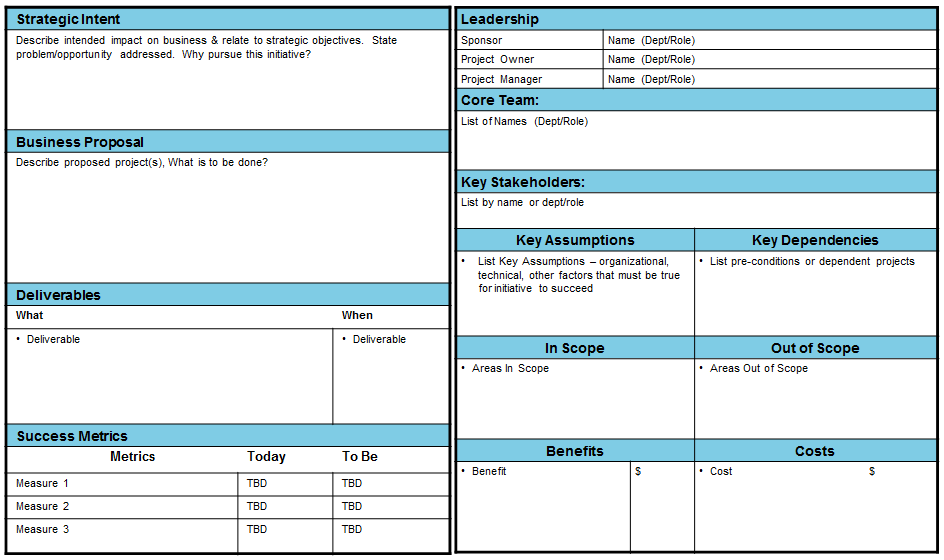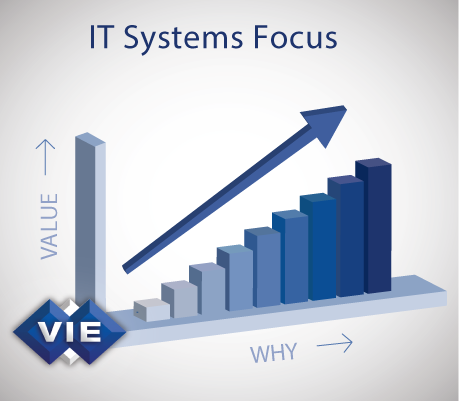As a business executive, if you feel you’re not receiving value from your company’s investments in IT, you’re not alone. In this post, we’ll lay out practical actions business leaders can take to help ensure their investments in IT systems consistently deliver more value.
IT Project Success Evades Many
It’s a staggering statistic – more than two-thirds of IT projects either fail completely or fail to deliver the value expected. Much effort has been expended to explain the reasons for this phenomenon – certainly the need for skilled people, defined requirements, project management and communication all play a role. Our experience also suggests a more fundamental shortcoming, one business leaders must take action on.
When new projects are initiated, most effort is typically focused on:
- the ‘What’; defining the problems to solve
- the ‘How’; proposing solutions to solve the defined problems
Often overlooked are the ‘Why’ questions; proper definition and focus on the strategic intent and key success metrics behind an initiative. Failure to properly address the \’Why\’ questions can doom projects to failure before they even start. This problem can be particularly troublesome for IT systems projects where investment costs are high, timelines are long, and technical capabilities are not well understood.
Create Charters to Define Your Initiative
Every initiative should be chartered with a simple document, often one page, that outlines the key decision-making factors for an IT investment. The charter document generally covers the Why, How, What and Who questions surrounding a project (see Figure 1, below). Additionally, download a template Project Initiative Charter to help with your project planning, here.

Take an Active Role as Project Sponsor
As Project Sponsor, a business executive must champion the initiative, communicate the project’s rationale, remove organizational barriers to progress, and ensure people are freed-up to adequately participate in the project. Do not abandon the sponsor role to the IT group, or others who do not have direct oversight of the primary business areas affected by the project.
Focus on Achieving Strategic Intent
Strategic intent is the ‘Why’ message – a simple statement (one to three sentences) that communicates the fundamental goals of the initiative, such as create new revenue, reduce expenses, or achieve a specific strategic objective. The following is an example of an effective statement of strategic intent:
“Increase production, purchasing and scheduling labor efficiency and improve on-time delivery”.
Measure Project Results
Establishing success metrics puts a stake in the ground and quantifies what success means for your business. Metrics should be clear and directly measure the achievement of strategic intent. Your charter should also lay out the timeline for achieving these goals
Metrics should be designed to indicate whether your strategic intent has been realized. Resist the temptation to set soft, or poorly quantified metrics, such as “improve usability”. Instead, find objective, observable criteria. For our example project above, key success metrics might be as follows:
|
Metrics |
Today |
To Be |
|
|
Labor Efficiency, measured by Revenue per FTE |
$300K |
$318K, within six months |
|
|
On Time Delivery |
60% |
80%, within three months |
|
Keep the Focus on WHY
 During execution of complex projects, conditions invariably change. Scope changes will be demanded, costs may climb, and schedules may slip. It is easy for the project team to lose sight of why the project was launched in the first place. Here, it is critical to be laser-focused on achieving the ‘Why’ of the project; strategic intent and success metrics. Do not allow scope changes, unless they are required to achieve these objectives. On the other hand, if a solution proves inadequate, or if business conditions change such that the strategic intent cannot be achieved, the sponsor must be willing to make hard decisions, including course corrections and even cancellation of the project.
During execution of complex projects, conditions invariably change. Scope changes will be demanded, costs may climb, and schedules may slip. It is easy for the project team to lose sight of why the project was launched in the first place. Here, it is critical to be laser-focused on achieving the ‘Why’ of the project; strategic intent and success metrics. Do not allow scope changes, unless they are required to achieve these objectives. On the other hand, if a solution proves inadequate, or if business conditions change such that the strategic intent cannot be achieved, the sponsor must be willing to make hard decisions, including course corrections and even cancellation of the project.
If all this sounds like a lot of time and effort – it is! But it is imperative to recognize the cost of ignoring and losing sight of the ‘Why’of a project is much higher. With the right team, timely advice, and using project ‘Why’ statements as primary motivators, you can beat the odds and succeed to achieve more value with IT systems initiatives.